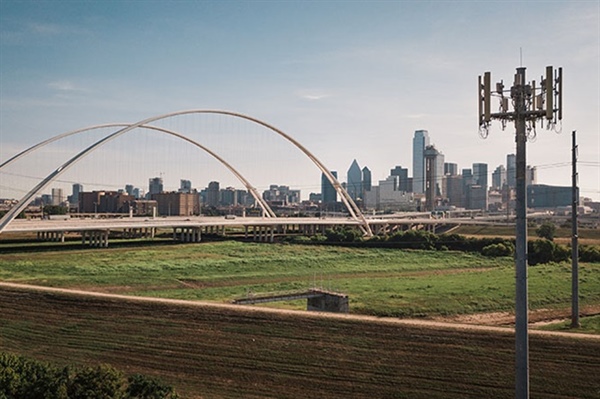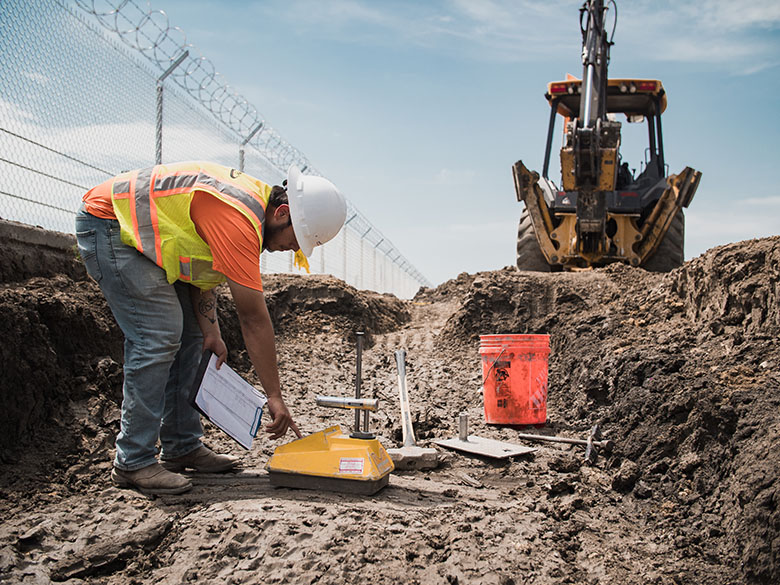Addressing Environmental Concerns in Urban Development Through Engineering

As urban areas continue to expand at an unprecedented rate, the need for sustainable development has never been more crucial. Our cities are not just growing; they're evolving, and it's up to us as environmental engineers and urban planners to shape this evolution responsibly.
With urban development becoming increasingly intricate, engineering solutions have to evolve to address our pressing environmental concerns. Here, our experts look at challenges faced by modern cities, highlight groundbreaking approaches to sustainable urban design, and provide actionable insights for stakeholders committed to building greener, more livable urban spaces.
The Urban Environmental Dilemma
Cities are the beating hearts of our societies, pulsing with life, innovation, and opportunity. However, this vibrancy comes at a cost. Urban areas are often hotspots for environmental issues that can significantly impact the quality of life for residents and the health of our planet.
A Phase I Environmental Site Assessment is one of the most efficient ways to identify significant urban development and environmental problems.
Air Pollution
Air pollution remains one of the most visible and pressing concerns in urban environments. The concentration of vehicles, industries, and energy consumption in cities leads to elevated levels of harmful pollutants. These pollutants not only affect human health but also contribute to climate change on a global scale.
Water Quality
Water quality is another critical issue faced by urban areas. As cities grow, natural water systems are often disrupted, leading to pollution of rivers, lakes, and groundwater. This pollution can stem from various sources, including industrial runoff, inadequate sewage treatment, and the mismanagement of urban waste.
Waste Management
The challenge of waste management grows exponentially with urban populations. Cities generate enormous amounts of waste daily, and without proper systems in place, this can lead to environmental degradation and public health risks.
Loss of Natural Habitats
Urbanization also often comes at the cost of biodiversity. As natural habitats are replaced by concrete jungles, local ecosystems suffer, leading to a loss of plant and animal species that are crucial for maintaining ecological balance.
These environmental challenges are not isolated issues; they are interconnected and compound one another. For instance, poor waste management can lead to water pollution, which in turn affects biodiversity. This complex web of environmental concerns requires a holistic and innovative approach to urban development.

Engineering a Sustainable Future
As an engineering company specializing in geotechnical and environmental solutions, we recognize the pivotal role that environmental engineers and urban planners play in addressing these urban environmental challenges.
Our professionals are at the forefront of developing and implementing strategies that mitigate environmental impact while fostering urban growth.
The Role of Environmental Engineers
Environmental engineers bring a unique set of skills to the table. They analyze the environmental impact of proposed developments, design systems for waste management and pollution control, and work on remediation projects to clean up contaminated sites.
Their expertise is crucial in ensuring that urban development projects adhere to environmental regulations and standards while also creating innovative solutions that shape the future of environmental sustainability.
Large-Scale Development With Urban Plans
Urban planners, on the other hand, focus on the bigger picture. They consider how different elements of a city interact and how to create spaces that are not only functional but also environmentally sustainable.
This involves planning for green spaces, designing efficient transportation systems, and integrating sustainable practices into the very fabric of urban design.
Partnerships That Work
The collaboration between these two disciplines is where the magic happens. By combining the technical expertise of environmental engineers with the strategic vision of urban planners, we can create comprehensive solutions that address multiple environmental concerns simultaneously.
For instance, when planning a new residential development, our team of engineers and planners collaborates to incorporate green infrastructure elements. These might include designing bioswales to manage stormwater runoff, integrating renewable energy systems into buildings, and planning for community gardens that promote biodiversity and local food production.

Cutting-Edge Solutions for Urban Sustainability
In our work across various urban development projects, we've implemented and witnessed the effectiveness of numerous innovative engineering solutions. These approaches not only address environmental concerns but also enhance the overall quality of urban life.
- Green Infrastructure: Unlike traditional "gray" infrastructure that often works against nature, green infrastructure harnesses natural processes to provide essential urban services. For example, wetlands that act as natural water filtration systems and groundwater management sources reduce the burden on municipal water treatment facilities while creating beautiful, biodiverse spaces within the city.
- Sustainable Building Design: Engineering innovation is making a big impact here by moving beyond simple energy-efficient appliances to entire structures designed with sustainability in mind. This includes the use of recycled and low-impact materials, the implementation of passive heating and cooling systems, and the integration of green roofs and walls that improve air quality and reduce the urban heat island effect.
- Renewable energy integration: This is becoming increasingly important in urban development, from incorporating solar panels into building facades to harnessing geothermal energy for district heating systems.
- Smart City Technologies: By leveraging data and IoT devices, engineers are revolutionizing urban environment management. They can optimize everything from traffic flow to waste collection, reducing energy consumption and improving resource efficiency.
These innovative solutions demonstrate that with the right engineering approach, we can create urban environments that are not only less harmful to the environment but also actively beneficial.

Striking the Balance: Development & Conservation
While innovative engineering solutions are crucial, they must be implemented within a framework that balances development needs with environmental preservation. This balance is at the heart of sustainable urban planning and development.
Stakeholder engagement is crucial in this balancing act. Our team works closely with local communities, businesses, and government agencies to ensure that development projects meet the needs of all parties while maintaining a strong focus on environmental sustainability.
By employing strategies like compact city design, transit-oriented development, and the integration of nature-based solutions into urban planning, while working collaboratively with all stakeholders, we can create urban environments that are not just sustainable but regenerative – actually improving environmental conditions over time.
Chart the Course for Sustainable Living With Terradyne
As we look to the future of urban development, environmental engineering's role in creating sustainable cities is clearer than ever. The challenges we face are significant, but so are the opportunities for positive change.
No matter your role in the development of urban, residential, commercial, or industrial construction, you need a partner when scoping out the land, perfecting designs, and navigating the development process. At Terradyne, our expert environmental engineers offer Phase I and II ESAs, wetland surveys, environmental impact studies, soil sampling, and more to help you discover what you need to get your project off the ground.
Benefit from both our expedited turnaround time and real-world solutions. Because you need to know the options to move your project forward as soon as possible, our team provides crucial insights in 2-3 weeks. Contact our engineers today and see progress tomorrow!